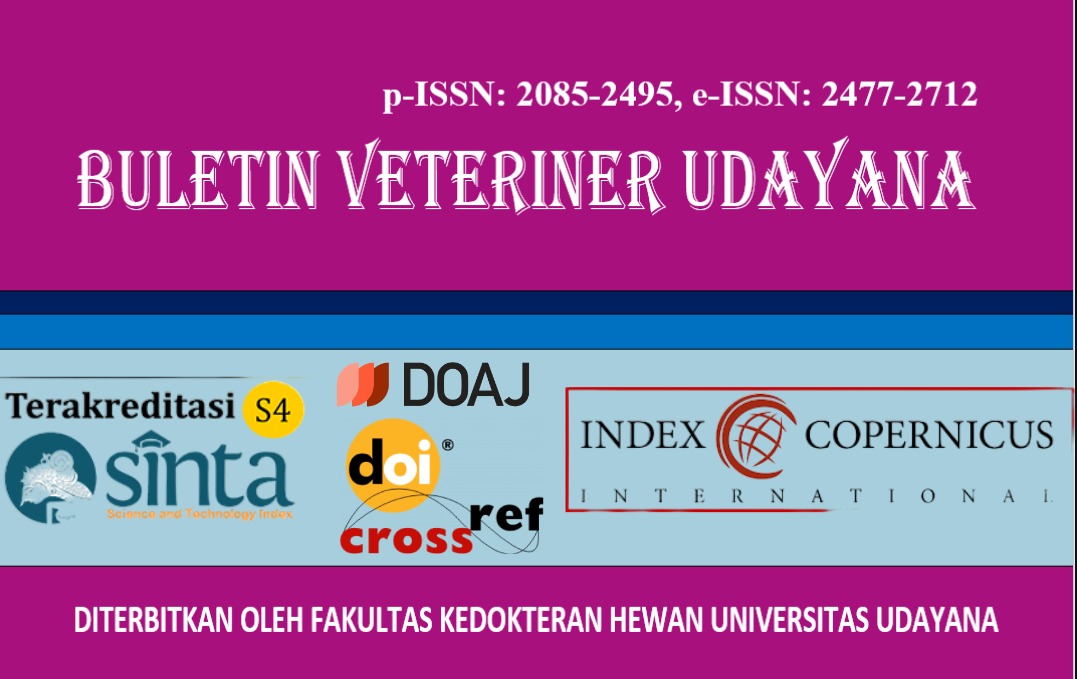ASSESSING ANTIBIOTIC SALES AMONG ANIMAL FEED TRADERS IN RURAL BALI: INSIGHTS FROM BANGLI AND TEMBUKU SUBDISTRICTS
DOI:
https://doi.org/10.24843/bulvet.2025.v17.i03.p37Keywords:
antimicrobial resistance, antibiotics, livestock feed tradersAbstract
Antimicrobial Resistance (AMR) occurs when microorganisms develop resistance to antimicrobial agents, partly due to the misuse or overuse of antibiotics for treatment and disease prevention. The easy accessibility of antibiotic distribution has led livestock feed traders to sell antibiotics without veterinary prescriptions. This study aimed to identify the percentage of feed traders selling antibiotics, the types available, and the proportion of licensed traders in Bangli and Tembuku Districts, Bali. Using a questionnaire-based interview method with descriptive analysis and Chi-Square testing, the findings revealed that 9.5% (10/106) of traders sold antibiotics, while only 0.94% (1/106) possessed a valid veterinary drug license and required prescriptions. The antibiotics sold included Amoxicillin, Enrofloxacin, Lincomycin HCl, Oxytetracycline HCl, Spectinomycin HCl, Ciprofloxacin, Doxycycline Calcium, Erythromycin, Tetracycline HCl, and Tylosin Tartrate. The results indicate uncontrolled antibiotic circulation in both locations, underscoring the need for stricter regulatory oversight and trader education on licensing requirements and the risks of antibiotic misuse.




